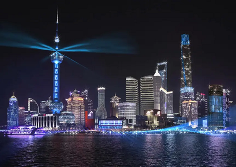Pudong leads the way in becoming an intl consumption center
In a bid to accelerate its development into an international consumption center, Pudong New Area in East China's Shanghai is taking the lead in upgrading domestic consumption through reform and innovation.
Since the Communist Party of China Central Committee and the State Council, China's cabinet, jointly announced a document to support Pudong in becoming a leading area for socialist modernization through high-level reform and opening-up in July 2021, Pudong has been working to develop into an international consumption center, striving to expand the scale of consumption.
In 2023, Pudong New Area's total retail sales of consumer goods reached 409.07 billion yuan ($57.31 billion), a growth of 13.6 percent year-on-year.
The first Shanghai Summer International Consumption Season in Shanghai is currently going on, welcoming global tourists to enjoy a summer of shopping in the city and offering an abundance of international flair, fashion trends and innovative experiences.
Global consumer brands have been increasing their presence in Pudong in recent years. Renowned French luxury brand Balenciaga showcased its Spring 2025 collection in Pudong on May 30, marking its first show in Asia against the vibrant backdrop of the Pudong skyline. Leveraging high-quality landmark venues, a series of global premieres have also been landing in Pudong, energizing the "first release economy" and solidifying its reputation as a demonstration zone for global new product launches.
Efforts to activate consumption and cultivate diverse scenes to unlock potential are in full swing in Pudong. Various commercial projects, such as shopping centers and unique commercial complexes, are enhancing the commercial landscape of the new area, catering to a wide array of consumer preferences and needs.
Pudong is enhancing its core competitiveness by emphasizing its role as an international consumption center and leveraging its advantages in reform, innovation, industrial integration and digital transformation to aggregate consumer resources, upgrade consumption spaces, improve consumption patterns, and optimize the consumption environment.
 Contact Us
Contact Us

 Brilliant light show to illuminate Huangpu River
Brilliant light show to illuminate Huangpu River Maple leaves paint splendid scenery in Pudong
Maple leaves paint splendid scenery in Pudong Appreciate alluring lotus blossoms in Pudong's Century Park
Appreciate alluring lotus blossoms in Pudong's Century Park New pedestrian street boosts Pudong's night economy
New pedestrian street boosts Pudong's night economy 


